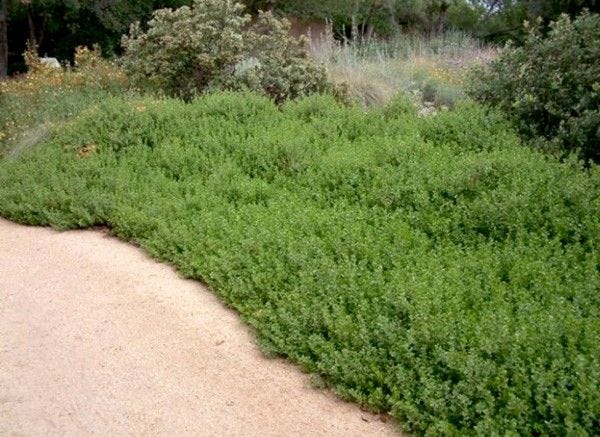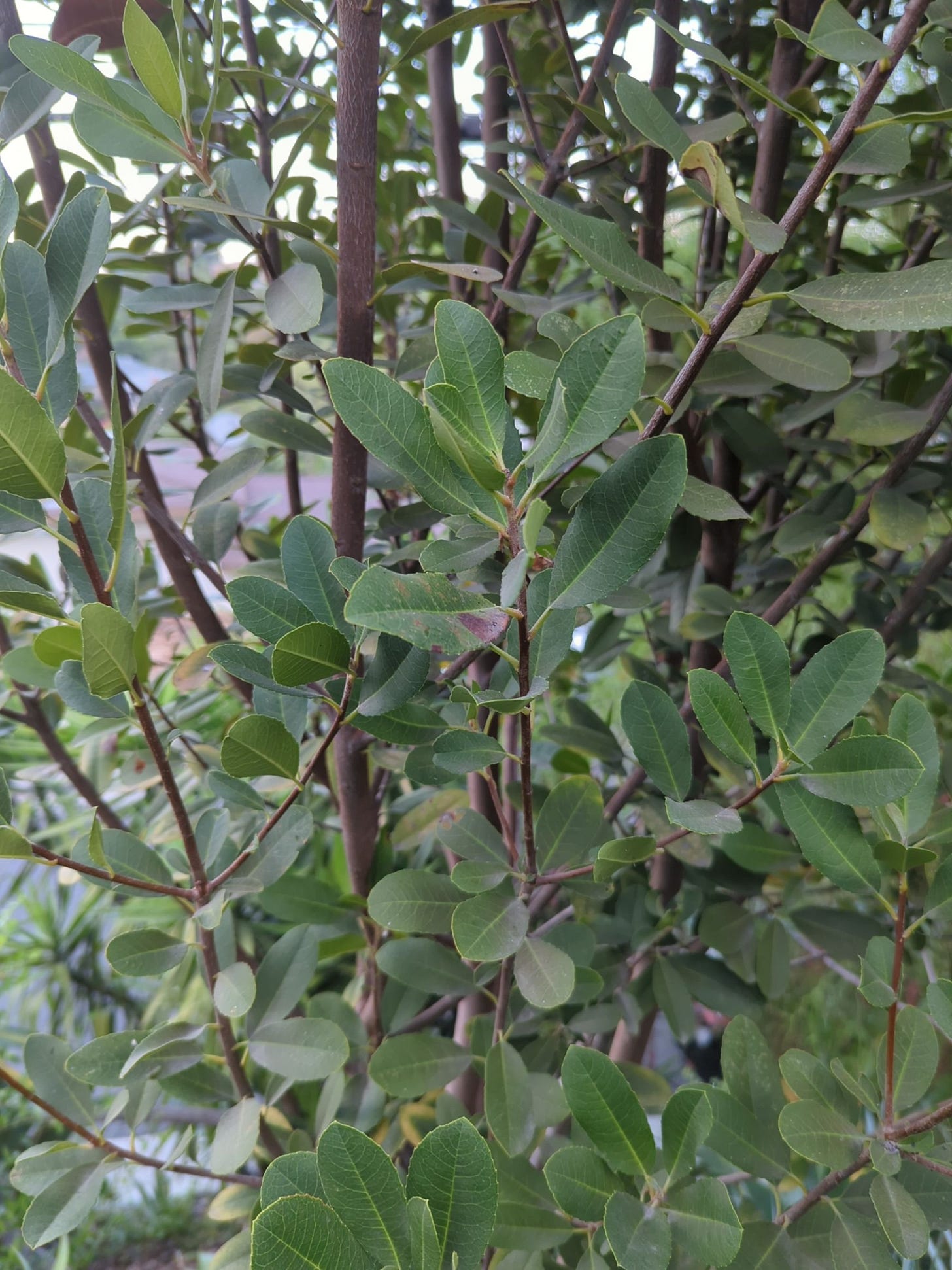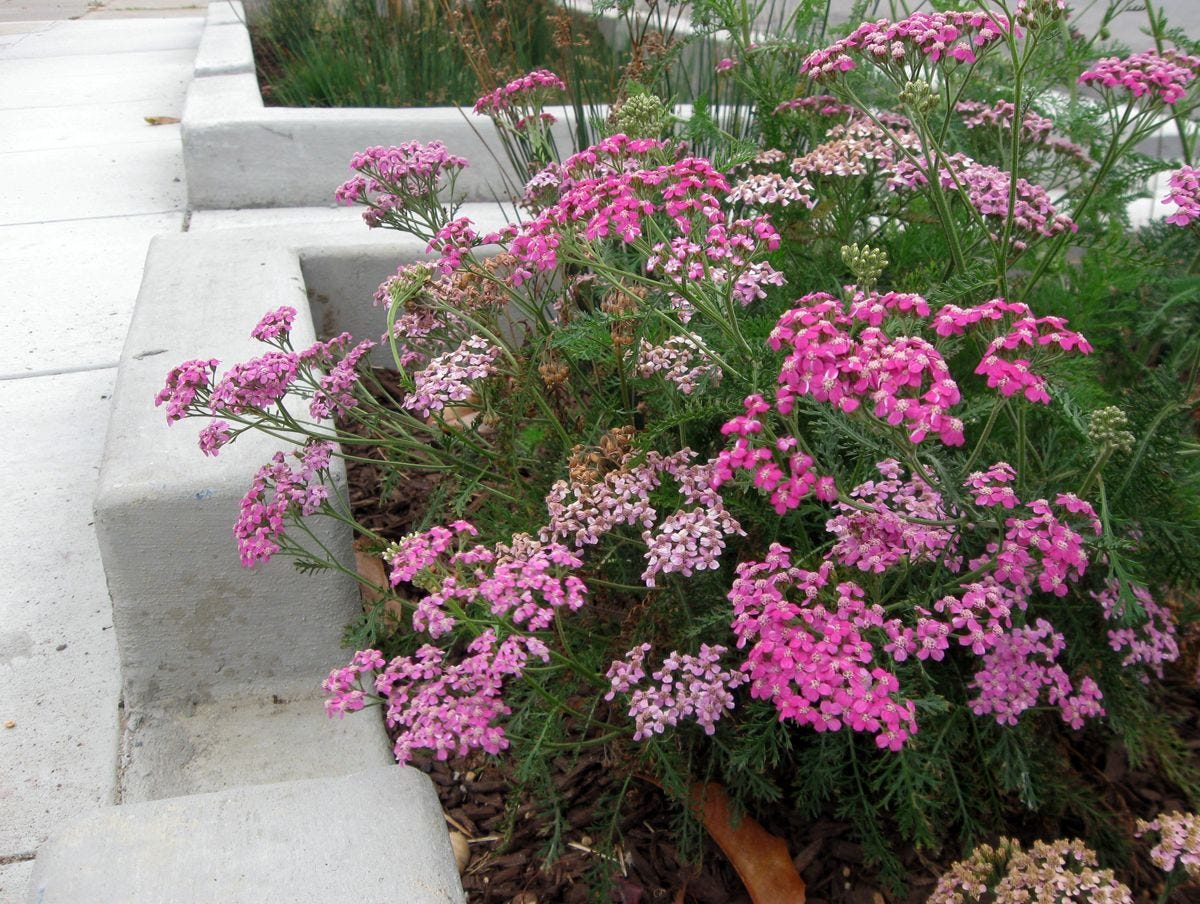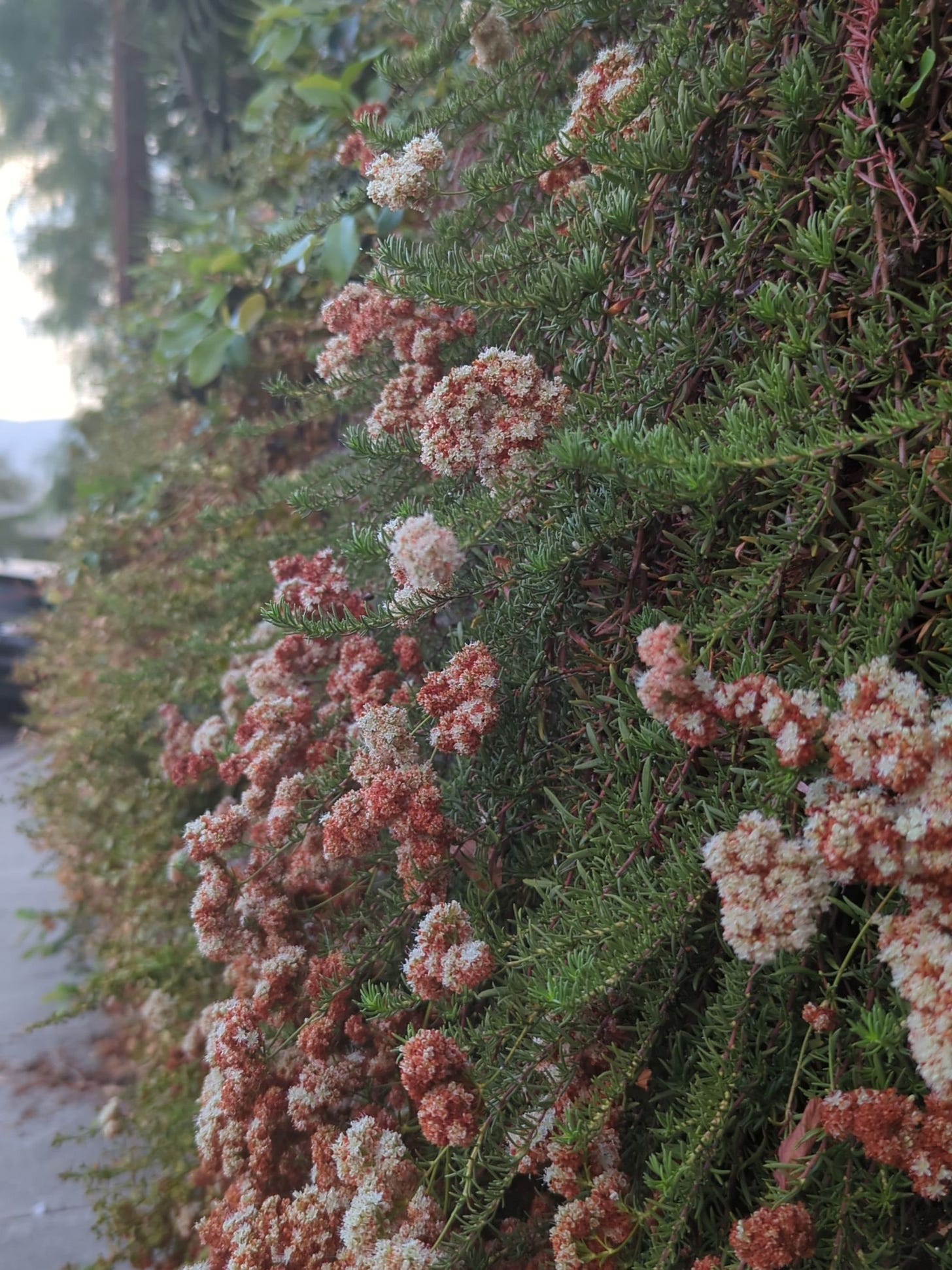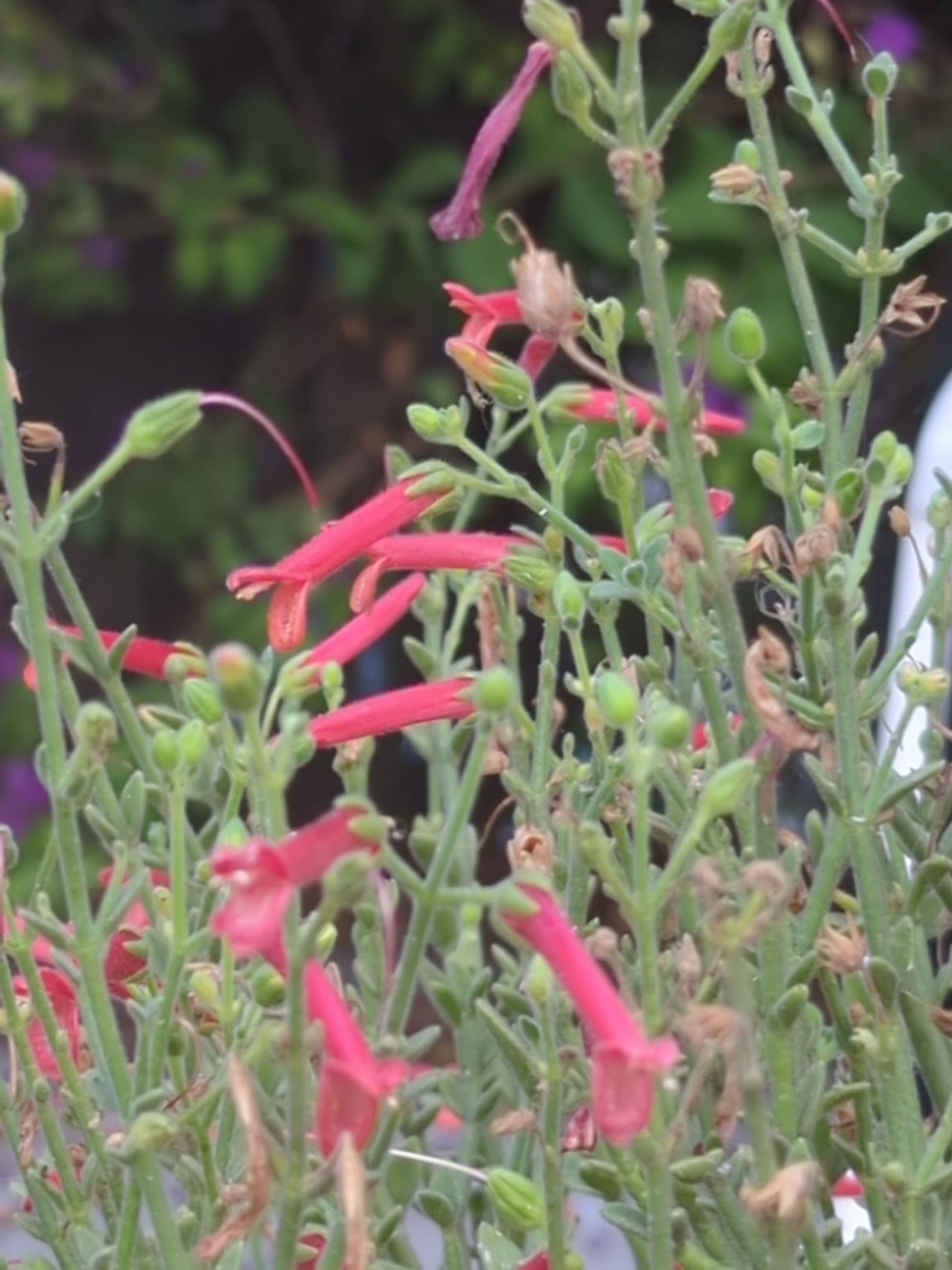Summer Dormancy in California
Summer in California is when our plants take a rest.
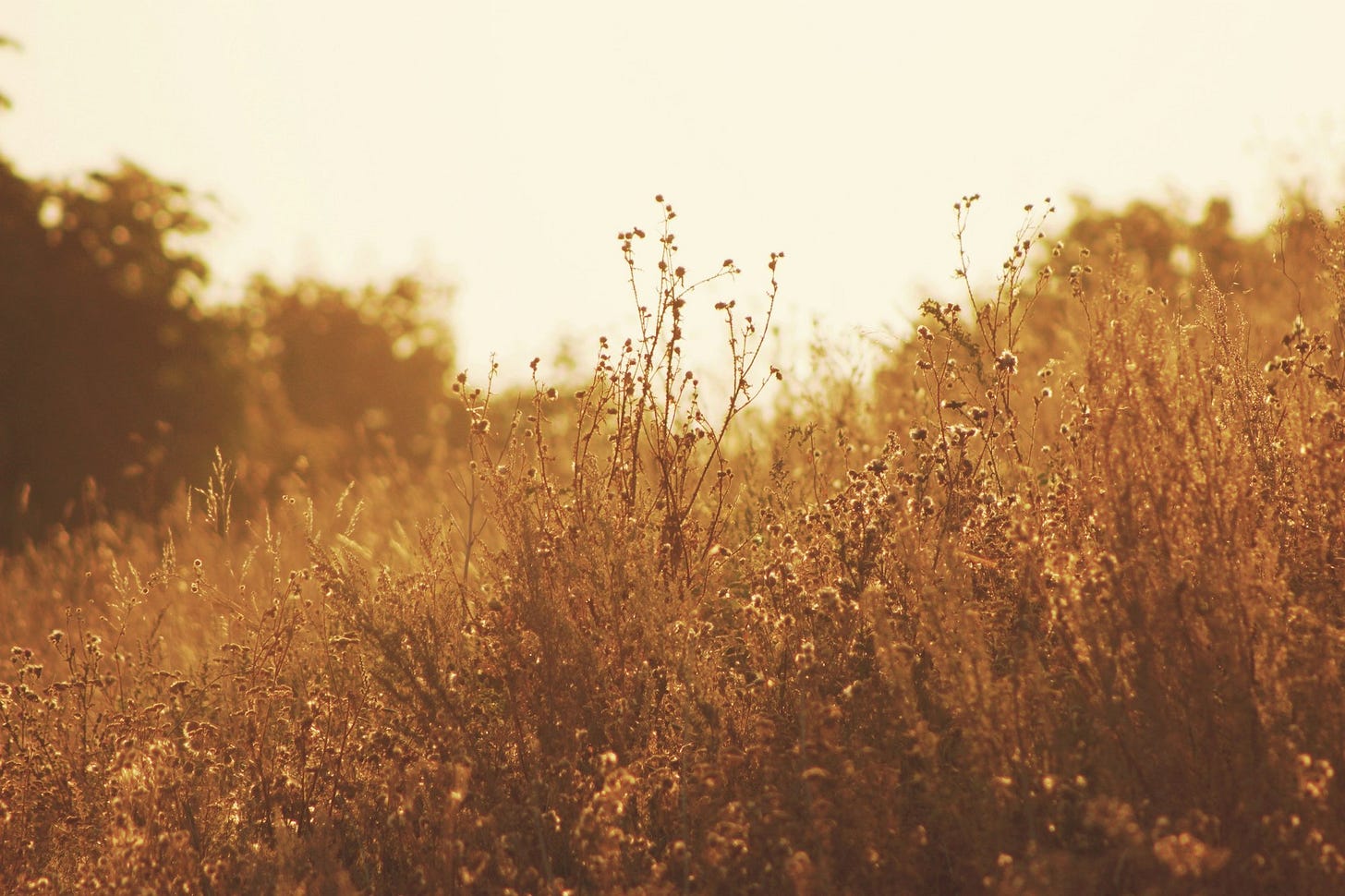
Unlike temperate climates, California does not suffer from plants going dormant en mass over winter. Instead, California native plants are typically dormant in late summer and autumn as a means to combat the harsh conditions of a dry hot summer. This can be rather discouraging to homeowners that want to replace their old-fashioned thirsty lawns and tropical landscapes, as they are familiar with a lifeless and brown landscape during the summer months when exploring natural areas. Luckily, this is an entirely avoidable situation when the landscape is designed and managed well.
Here are some ways to keep some vibrancy and color in your California native landscape during late summer:
True Evergreen Plants
Consider the proportion and spacing of evergreen shrubs in your plant layout. While many drought tolerant plants may lose their leaves, or grow a smaller set of leaves to minimize water loss (transpiration), some plants have a waxy, oily or hairy leaf that gives extra protection against hot dry sun and remain relatively lush looking during the summer but do not flower. Plants like these are "True Evergreen" plants that will not look all beat up after prolonged drought. Toyon (Heteromeles arbutifolia), Laurel Sumac (Malosma laurina), Sugar Bush (Rhus ovata) and its twisted sister, Lemonade Berry (Rhus integrifolia) are large shrubs that can be used in the background to create a verdant backdrop for your landscape. Dwarf Coyote Brush (Baccharis pilularis 'Pigeon Point') is a low growing evergreen with a mounding habit that has an emerald shine in the summer when hit by the sun.
Coppicing
As an adaption to animal grazing and wildfires, many California Native plants are able to regenerate by growing back from their crown (the bottom of the trunk) when cut down to the ground. This does not generally create new growth in the summer unless there is a source of moisture nearby such as a natural waterway or overflow from an irrigated lawn, but allows you to remove the spent growth confident that it will return in the growing season (Winter/Spring). Coppicing is the term for this type of pruning.
Shrubs that can be coppiced include:
California Poppy (Eschscholzia californica)
Heart-leaved Penstemon (Keckiella cordifolia)
Sticky Monkeyflower (Mimulus aurantiacus)
Toyon (Heteromeles arbutifolia)
Laurel Sumac (Malosma laurina)
Indian Mallow (Abutilon palmeri)
California Sunflower (Helianthus annuus)
Matilijia Poppy (Romneya coulteri)
Zauschneria (Epilboium canum)
You should ensure that when coppicing dormant plants you always sanitize and sharpen your shears when moving from plant to plant to prevent viral or bacterial infection that will stunt regeneration.
Summer Flowers
California Native Plants are known for spring colors, made famous on social media during "Superblooms". While a number of native plants can produce flowers in summer, they generally require some supplemental water. For reliable summer blooms even in the driest years, these 4 plants are my favorite to incorporate in a full sun landscape:
Yarrow (Achillea millefolium)
Yarrow is a low growing plant, that is often used to create meadow landscapes in place of a traditional grass lawn. Flowers grow on long stalks, up to 2 ft (60cm) above the ground. This plant is widely grown and found naturally throughout the world in both Mediterranean and temperate climates, so try to source these from a reputable native plant supplier to ensure you get the variety best suited for a California summer. The native species will mostly have white flowers. For a splash of warmth, the cultivar "Island Pink" is a reliable pink flowered Yarrow. Yarrow flowers year round, and late summer flowering is encouraged by removing flower stalks that grew in spring before going to seed.
Zauschneria (Epilobium canum)
Zauchneria, AKA California Fuschia, is a plant that doesn't start blooming until most other plants are done. In August Zauschneria will produce many red/pink flowers and will continue to bloom through September. A hummingbird favorite!
Note that while Zauschneria is listed a plant suitable for coppicing, this should only be considered in summer if the plant is damaged or it's bloom has receded. Ideally this plant should be coppiced in Winter but in exceptionally dry years it may deteriorate quickly so a late summer prune is suitable. If it has not bloomed yet, hold off on pruning!
California Buckwheat (Eriogonum fasciculatum)
Buckwheat is a very underappreciated plant, rarely found outside of native nurseries but I cannot understand why - it is the easiest of all native plants to grow and has flowers that last from spring all the way to autumn. The flowers of Buckwheat are long-lasting and are pink when they first emerge, slowly fading to white over summer and cinnamon through autumn. Eventually the strong winds of winter storms blow the dried flowers off the plant. the plant looks a lot like Rosemary when it is not in flower, and there are trailing as well as upright varieties to choose from. Butterflies love this plant!
Baja bush snapdragon (Galvezia juncea)
This plant is another hummingbird favorite with small thin red flowers that bloom in summer and autumn. Hailing from Baja California in Mexico (California Native Plants belong to both California, USA and Baja California), this plant is resilient to the stronger sun found at its natural home, and remains green and relatively lush during summertime.
Large shrubs and Trees to watch out for (deciduous)
As mentioned earlier, many native plants react to drought by shedding their leaves, and this turns a lush shrub or tree into a dead looking bunch of sticks. Some of these deciduous plants have an architectural form when bare of leaf, while others just look like they have expired. If they cannot be coppiced, you will need to understand that these are meant to shed their leaves in summer and your design should acknowledge this. The simplest mistake to make is to place too many summer-deciduous plants too close together - better if you space them out and fill in with evergreens or plants that actively grow in summer such as Galvezia or Zauschneria. These are some of the most common native plants that shed leaves in summer:
Buckeye Tree (aesculus californica)
Native Gooseberries and Currants (Ribes species, except Ribes viburnifolium)
Ocean Spray (Holodiscus discolor)
Blue-eyed Grass (Sisyrinchium bellum)
Live Forever Succulents (Dudleya species)
Shrubs that must not have summer water
California Native Shrubs typically evolved in regions that are always arid in summer. The makeup of soil in summer is very different from winter as the heat creates a different ecosystem of soil microbes that can be harmful to native plants if the soil gets wet. Because they never had to deal with hot wet soil before California was colonized, these shrubs are not able to resist fungal infections like tropical plants , and giving water to these plants over summer can kill your plants. A useful resource for determining water use for plants in California is WUCOLS (Water Use Classifications of Landscape Species), a database of plants and their water needs by region in California. When using this tool, a "reduced summer water" icon appears next to plants that are sensitive to summer water.
While it may be tempting to give your landscape some extra water to perk things up, bear in mind that the following commonly used native plants are very sensitive to summer water and should not be given supplemental water in summer:
California Lilac (Ceanothus species)
Manzanita (Arctostaphylos species)
Wooly Blue Curls (Trichostema lanatum)
Bush Poppy (Dendromecon harfordii)
California Flannel Bush (Fremontodendron californica)
Despite the issues with summer watering, other plants can benefit from some summer water to remove dust, cobwebs and bird poop that build up due to the absence of rain. Ensure that when you water in summer, you do it on cooler days and only water at Dawn or after Dusk, never at midday.
Enjoy The Summer in Your Native Landscape
With all these tips in mind, sit back and relax and enjoy your summer landscape. This is the best time of year to enjoy the butterflies, hummingbirds and lizards that are attracted to your native landscape. Your plants should be resting, and so should you - you deserve it.


